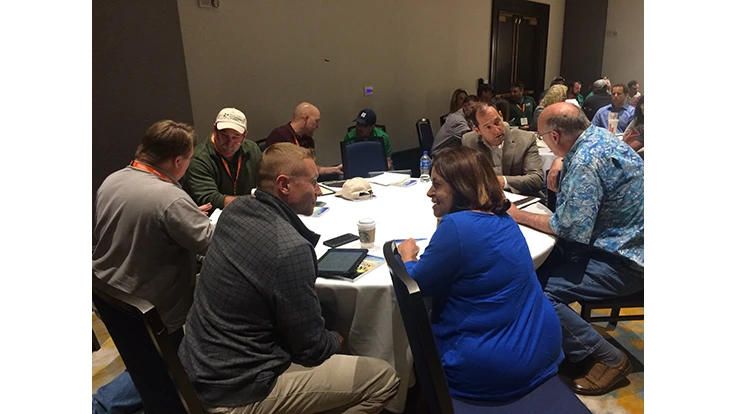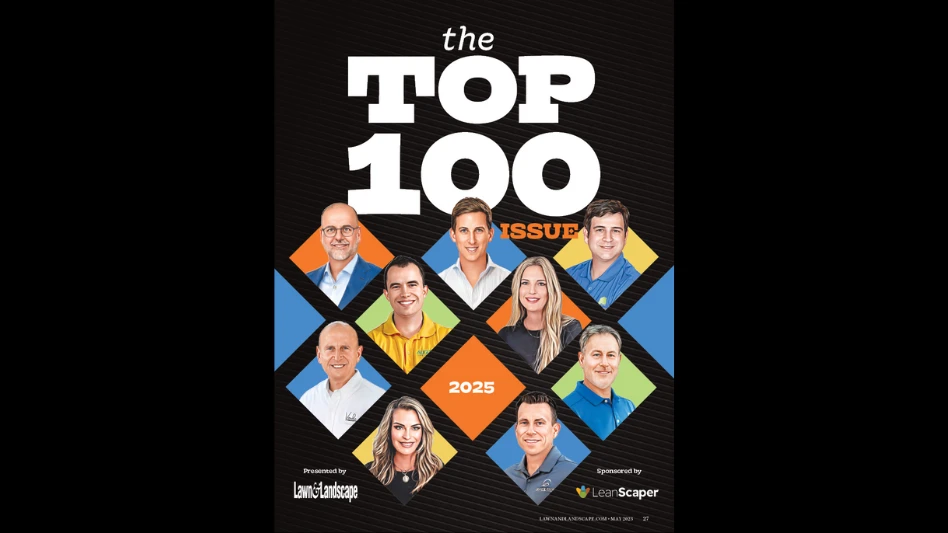
With all the busyness of a landscape contractor’s job, contractors sometimes struggle to define the roles of CEO and COO. Jeffrey Scott, an author and a consultant for landscaping contractors, hosted a session at LANDSCAPES, hosted by the National Association of Landscape Professionals, to discuss how to develop more effective CEO/COO partnerships to address this problem.
During his session, Scott said contractors listed the following as their biggest issues with defining the roles for CEOs and COOs: clarifying the responsibilities; overlap issues; hierarchy; lack of being on the same page; communication issues; lack of clear vision; issues delegating authority; too much or too little buy in; and lack of passion.
Scott had CEO/COO teams from three different landscaping companies share their stories of how they managed to improve their relationship and define their roles, including Sun Valley Landscaping of Omaha, Nebraska; Drost Landscape of Petoskey, Michigan; and Swazy & Alexander Landscaping of Newburyport, Massachusetts. Paul Fraynd, CEO of Sun Valley Landscaping, appointed Ashly Neneman as his first general manager a few years ago to help ease his workload.
“When Ashly came to my company, we were at $1 million in revenue, 15 employees and it was chaos,” Fraynd said. “I had wanted to change the company, but I couldn’t do that without someone I trusted. Yet one of the hardest parts was delegating work – I liked to poke my head into her work. So, Ashly told me I had to stop helicoptering her. As soon as I stopped, things happened quickly. I would say set up your No. 2 to shine and be the voice of the company.”
While it may be difficult to define the role of a COO or GM and differentiate it from that of the CEO, Scott listed the following as seven responsibilities the COO should manage:
- Identify issues and priorities – their job is to be like an internal consultant for the company and collect information about the company, synthesize that information and then set priorities.
- Align goals, values, vision and compensation – the COO must be able to communicate the CEO’s vision for the company to all others at the company.
- Make sure trains run on time, like budget and systems – they should make sure budgets and systems at the company work properly.
- Talent hunter and trainer – they need to look for talent and train the talent.
- Strategic planning and budgeting – they will drive the budget at the company.
- Continuous improvement both personally and systematically – making sure the company continues to improve year-over-year.
- Filling leadership gaps – either delegating, hiring and training top leaders to fill positions where there may be gaps.
For successful collaboration between the CEO and COO, Scott added that one key is to over communicate.
“Communication is always a weak spot,” he said. “When you want to have a partnership with your COO (or GM), communication is the most important thing to make that work. So you must over communicate – communicate ad nauseum. When these two positions (CEO and COO) do well and get in their lanes, the company will start to grow a lot faster.”
Latest from Lawn & Landscape
- Echo secures Sourcewell contract for public agencies
- New AI startup Plantista launches crowdfund for firewise landscaping
- Residential in the rear view
- Harness the Power of Emotion to Attract Lawn Care Clients
- Ignite Attachments introduces tree and fence post puller
- Landscape Workshop acquires 2 in Virginia markets
- Schill Grounds Management acquires Elevations Landscaping
- Central Turf & Irrigation rebrands as Central Pro Supply







